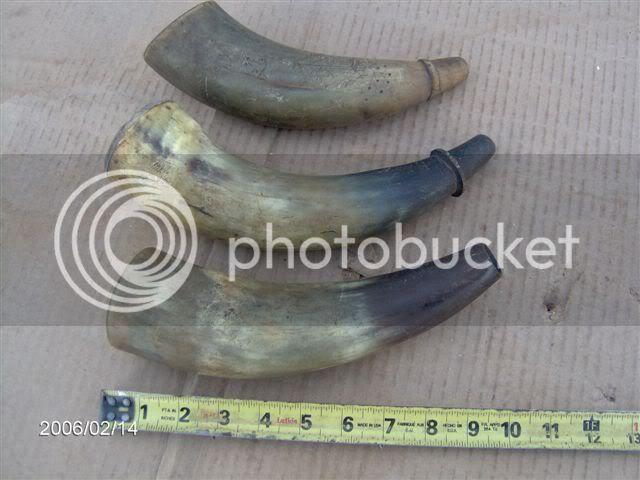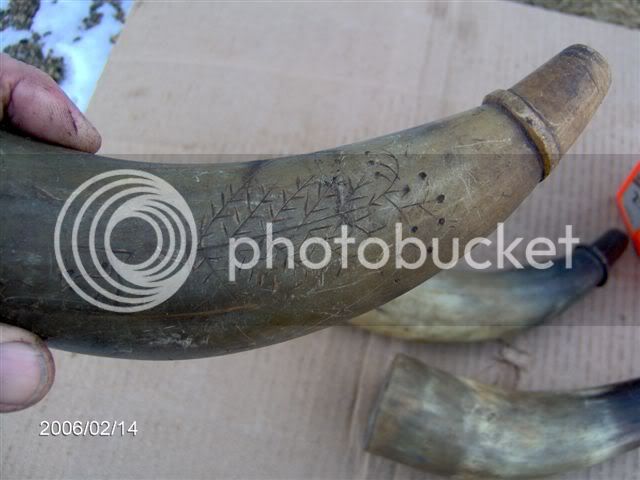My family has a little day horn, maybe 6 inches long, that is VERY roughly made. However, it was rasped to shape, and scraped smooth afterwards - You can see the rasp marks underneath the thousands of tiny facets left from the pocketknife or whatever was used to scrape it. The scraper also left a ripply surface, you can still see knifemarks where the tip was carved down, the shoulder isn't quite straight, a piece of paper was used to fill a gap between the plug and horn, etc. Very plain and simple horn, but someone cared enough to rasp it down a bit.
Point being that a horn left entirely in the rough is extremely unlikely, in my opinion. I can't recall ever seeing one (and, no, the argument that they were just all used up is not valid. Lots of rough and ready horns out there...) Scraping a horn is not too difficult, and is a good sit-around-the-fire-in-the-evening task. After all, a powder horn already requires a fair amount of work in drillling the spout, making and fitting the plug, etc., to make functional and benefits from being thinned (every raw horn I have seen is too thick in one spot or another). An untouched horn might sound nice in theory, but I think it will be more historically correct and you will be happier with it in the long run if you rasp it down and scrape it a bit as outlined above.






